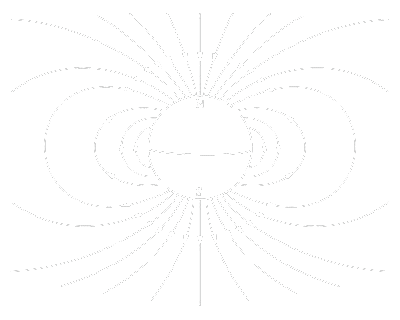|
The Earth's magnetic field, which is approximately a dipole. However, the "N" and "S" (north and south) poles are labelled here geographically, which is the opposite of the convention for labelling the poles of a magnetic dipole moment.
A dipole (Greek: di(s) = double and polos = pivot) is a pair of electric charges or magnetic poles of equal magnitude but opposite polarity (opposite electronic charges), separated by some (usually small) distance. Dipoles can be characterized by their dipole moment, a vector quantity with a magnitude equal to the product of the charge or magnetic strength of one of the poles and the distance separating the two poles.
The direction of the dipole
moment corresponds, for electric dipoles, to the direction from the
negative to the positive charge. For magnetic dipoles, the dipole
moment points from from the magnetic south to the magnetic north pole —
confusingly, the "north" and "south" convention for magnetic dipoles is
the opposite of that used to describe the Earth's geographic and
magnetic poles, so that the Earth's geomagnetic north pole is
the south pole of its dipole moment. (Because of the absence of
magnetic monopoles, magnetic dipoles are actually created by
current loops and/or by quantum-mechanical spin.)
|
